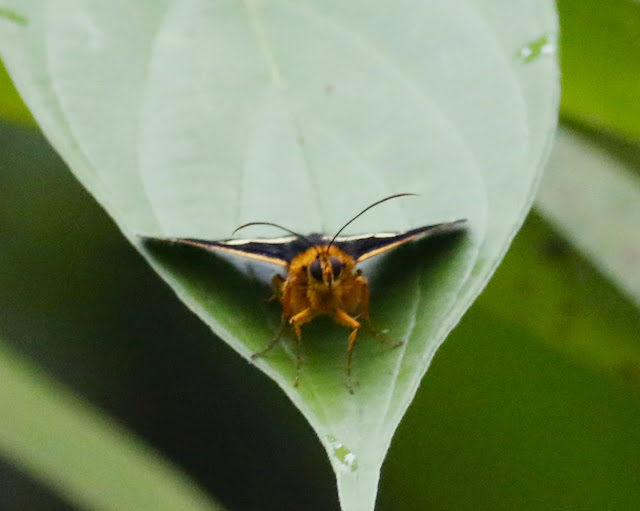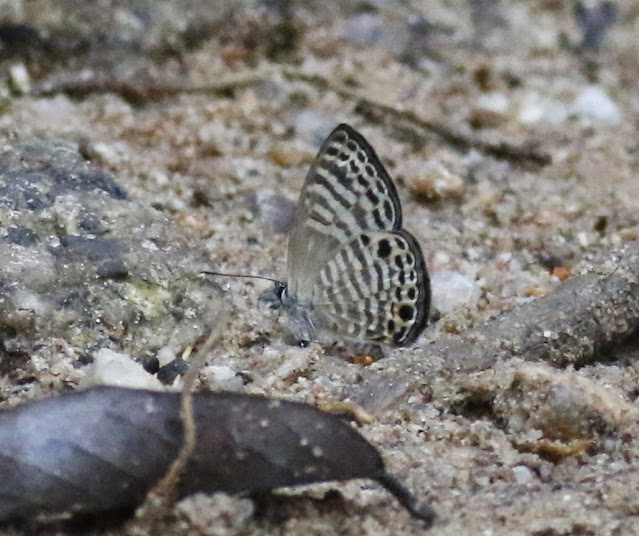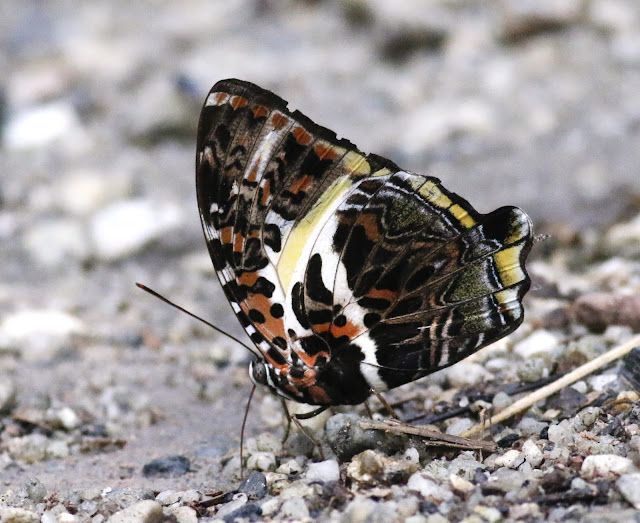The month of September 2022 saw many species from the "Orange Club". Most of them were seen in the Klang Valley despite the incoming rainy season over here.
Plush (Sithon nedymond)
So far I have been seeing only the females of this species (like the one above). Are males of this species scarcier than females ?
It is just slightly larger than Chersonesia intermedia (Wavy Maplet)
Common Yeoman (Cirrochroa tyche rotundata)
This subspecies of Cirrrochroa tyche is less common than the other subspecies.
This one is a female Malay Staff Sergeant (Arthyma reta moorei)
The female of this species is less common than the males which has black uppersides instead.
Plain Lacewing (Cethosia methypsea methypsea)
Reported to be an unpleasant butterfly for any birds to eat.
It is quite an uncommon species here.
Tawny Rajah (Charaxes bernarduscrepax)
This "Mr Rajah" refused to come down from the tree tops and stayed there for the entire day.
After the "Orange Club" has dispersed, came members from other clubs.
Great Mormon (Papilio memnon agenor)
On numerous occasions I have seen it flying in between the trees along the trail but it hardly stops. This time I said a little prayer that it will stop for a moment for me and it actually did ! Yahoo !
As its name suggests it is one of the biggest Papilios in this region. It did flew off for moment but luckily it came back again. So happy to finally able to get its open wings shot. This is a male.
The Wizard (Rhinopalpa polynice eudoxia)
Although not rare but it's an uncommon butterfly.
Experts have ID this one as a Malayan Baron (Euthalia monina monina)
Looks like this species has a lot of different upperside color variations.
Another uncommon beauty.
Tawny Palmfly (Elymnias panthera)
Malayan Sailor (Neptis duryodana nesia)
Malayan Sailor - same butterfly but at different angle of light
Ancyra Blue (Catopyrops ancyra aberrans)
Reported to be rare or perhaps an uncommon species.
Prosotas aluta nanda (Barred Line Blue)
Barred Line Blue
Initially I thought this could be a Prosotas pia pia (Margined Line Blue) but experts say that P. pia pia is a montane species. The next possibility would be a Prosotas gracilis ni but the above has a tail. So which species could it be? Note: this is most likely a Prosotas bhutea (Bhutya LineBlue) !
Next one is less confusing.
Ciliate Blue (Anthene emolus goberus)
This is a very small Prosotas and it can fly very fast.
Prosotas nora superdates (Common Line Blue)
Blue Begum (Prothoe franck uniformis)










































































.JPG)



.JPG)